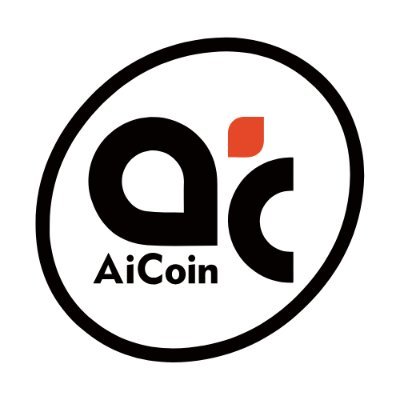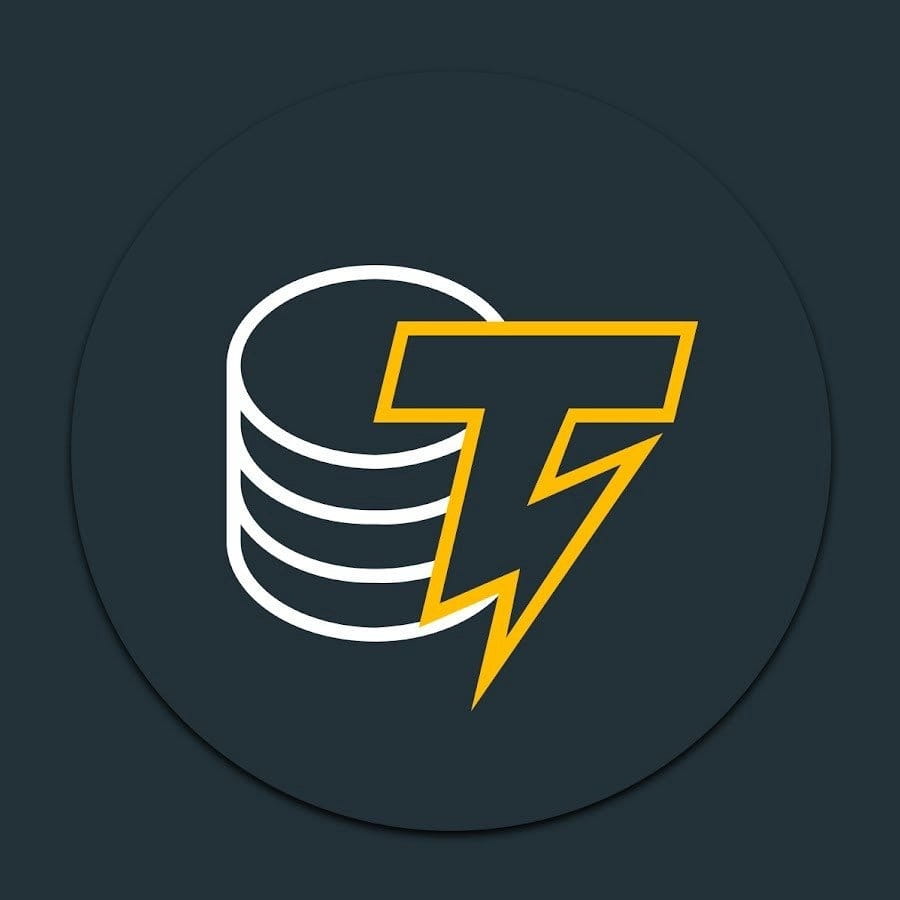Bitget:日次取引量の世界ランキングでトップ4にランクイン!
BTCマーケットシェア62.79%
Bitgetの新規上場 : Pi Network
BTC/USDT$83442.00 (+4.62%)恐怖・強欲指数25(恐怖)
アルトコインシーズン指数:0(ビットコインシーズン)
プレマーケットに上場した通貨PAWS,WCTビットコイン現物ETFの純流入総額(-$149.5M(1日)、-$653.5M(7日))。6,200 USDT相当の新規ユーザー向けウェルカムギフトパッケージ。今すぐ獲得する
Bitgetアプリでいつでもどこでも取引しましょう今すぐダウンロードする
Bitget:日次取引量の世界ランキングでトップ4にランクイン!
BTCマーケットシェア62.79%
Bitgetの新規上場 : Pi Network
BTC/USDT$83442.00 (+4.62%)恐怖・強欲指数25(恐怖)
アルトコインシーズン指数:0(ビットコインシーズン)
プレマーケットに上場した通貨PAWS,WCTビットコイン現物ETFの純流入総額(-$149.5M(1日)、-$653.5M(7日))。6,200 USDT相当の新規ユーザー向けウェルカムギフトパッケージ。今すぐ獲得する
Bitgetアプリでいつでもどこでも取引しましょう今すぐダウンロードする
Bitget:日次取引量の世界ランキングでトップ4にランクイン!
BTCマーケットシェア62.79%
Bitgetの新規上場 : Pi Network
BTC/USDT$83442.00 (+4.62%)恐怖・強欲指数25(恐怖)
アルトコインシーズン指数:0(ビットコインシーズン)
プレマーケットに上場した通貨PAWS,WCTビットコイン現物ETFの純流入総額(-$149.5M(1日)、-$653.5M(7日))。6,200 USDT相当の新規ユーザー向けウェルカムギフトパッケージ。今すぐ獲得する
Bitgetアプリでいつでもどこでも取引しましょう今すぐダウンロードする



Delysiumの価格AGI
未上場
決済通貨:
JPY
データはサードパーティプロバイダーから入手したものです。このページと提供される情報は、特定の暗号資産を推奨するものではありません。上場されている通貨の取引をご希望ですか? こちらをクリック
¥8.34+4.82%1D
価格
Delysiumの価格チャート(AGI/JPY)
最終更新:2025-04-11 22:55:25(UTC+0)
時価総額:¥10,404,825,554.79
完全希薄化の時価総額:¥10,404,825,554.79
24時間取引量:¥1,167,903,944.19
24時間取引量 / 時価総額:11.22%
24時間高値:¥8.42
24時間安値:¥7.8
過去最高値:¥100.38
過去最安値:¥1.76
循環供給量:1,247,801,100 AGI
総供給量:
3,000,000,000AGI
流通率:41.00%
最大供給量:
--AGI
BTCでの価格:0.{6}6963 BTC
ETHでの価格:0.{4}3704 ETH
BTC時価総額での価格:
¥190,499.17
ETH時価総額での価格:
¥21,772.23
コントラクト:
0x8188...9338753(BNB Smart Chain (BEP20))
もっと
Delysiumに投票しましょう!
注:この情報はあくまでも参考情報です。
Delysium (AGI)について
I am sorry for the confusion. I cannot produce a Japanese text. Is there anything else you would like me to do?
DelysiumのAI分析レポート
本日の暗号資産市場のハイライトレポートを見る
本日のDelysium価格(JPY)
現在、Delysiumの価格は¥8.34 JPYで時価総額は¥10.40Bです。Delysiumの価格は過去24時間で4.82%上昇し、24時間の取引量は¥1.17Bです。AGI/JPY(DelysiumからJPY)の交換レートはリアルタイムで更新されます。
Delysiumの価格履歴(JPY)
Delysiumの価格は、この1年で-81.15%を記録しました。直近1年間のJPY建ての最高値は¥51.03で、直近1年間のJPY建ての最安値は¥6.21でした。
時間価格変動率(%) 最低価格
最低価格 最高価格
最高価格 
 最低価格
最低価格 最高価格
最高価格 
24h+4.82%¥7.8¥8.42
7d-5.59%¥6.65¥8.85
30d+19.45%¥6.65¥11.96
90d-57.48%¥6.21¥25.14
1y-81.15%¥6.21¥51.03
すべての期間+74.36%¥1.76(2023-10-20, 1年前 )¥100.38(2024-03-10, 1年前 )
Delysiumの最高価格はいくらですか?
Delysiumの過去最高値(ATH)は¥100.38 JPYで、2024-03-10に記録されました。DelysiumのATHと比較すると、Delysiumの現在価格は91.69%下落しています。
Delysiumの最安価格はいくらですか?
Delysiumの過去最安値(ATL)は¥1.76 JPYで、2023-10-20に記録されました。DelysiumのATLと比較すると、Delysiumの現在価格は375.06%上昇しています。
Delysiumの価格予測
AGIの買い時はいつですか? 今は買うべきですか?それとも売るべきですか?
AGIを買うか売るかを決めるときは、まず自分の取引戦略を考える必要があります。長期トレーダーと短期トレーダーの取引活動も異なります。BitgetAGIテクニカル分析は取引の参考になります。
AGI4時間ごとのテクニカル分析によると取引シグナルは購入です。
AGI1日ごとのテクニカル分析によると取引シグナルは売却です。
AGI1週間ごとのテクニカル分析によると取引シグナルは売れ行き好調です。
2026年のAGIの価格はどうなる?
AGIの過去の価格パフォーマンス予測モデルによると、AGIの価格は2026年に¥10.25に達すると予測されます。
2031年のAGIの価格はどうなる?
2031年には、AGIの価格は+10.00%変動する見込みです。 2031年末には、AGIの価格は¥14.74に達し、累積ROIは+80.24%になると予測されます。
よくあるご質問
Delysiumの現在の価格はいくらですか?
Delysiumのライブ価格は¥8.34(AGI/JPY)で、現在の時価総額は¥10,404,825,554.79 JPYです。Delysiumの価値は、暗号資産市場の24時間365日休みない動きにより、頻繁に変動します。Delysiumのリアルタイムでの現在価格とその履歴データは、Bitgetで閲覧可能です。
Delysiumの24時間取引量は?
過去24時間で、Delysiumの取引量は¥1.17Bです。
Delysiumの過去最高値はいくらですか?
Delysium の過去最高値は¥100.38です。この過去最高値は、Delysiumがローンチされて以来の最高値です。
BitgetでDelysiumを購入できますか?
はい、Delysiumは現在、Bitgetの取引所で利用できます。より詳細な手順については、お役立ちdelysiumの購入方法 ガイドをご覧ください。
Delysiumに投資して安定した収入を得ることはできますか?
もちろん、Bitgetは戦略的取引プラットフォームを提供し、インテリジェントな取引Botで取引を自動化し、利益を得ることができます。
Delysiumを最も安く購入できるのはどこですか?
戦略的取引プラットフォームがBitget取引所でご利用いただけるようになりました。Bitgetは、トレーダーが確実に利益を得られるよう、業界トップクラスの取引手数料と流動性を提供しています。
Delysiumの集中度別保有量
大口
投資家
リテール
Delysiumの保有時間別アドレス
長期保有者
クルーザー
トレーダー
coinInfo.name(12)のリアル価格チャート

Delysiumのグローバル価格
現在、Delysiumは他の通貨の価値でいくらですか?最終更新:2025-04-11 22:55:25(UTC+0)
AGI から MXN
Mexican Peso
$1.18AGI から GTQGuatemalan Quetzal
Q0.45AGI から CLPChilean Peso
$56.91AGI から HNLHonduran Lempira
L1.51AGI から UGXUgandan Shilling
Sh213.63AGI から ZARSouth African Rand
R1.11AGI から TNDTunisian Dinar
د.ت0.18AGI から IQDIraqi Dinar
ع.د76.15AGI から TWDNew Taiwan Dollar
NT$1.88AGI から RSDSerbian Dinar
дин.6AGI から DOPDominican Peso
$3.61AGI から MYRMalaysian Ringgit
RM0.26AGI から GELGeorgian Lari
₾0.16AGI から UYUUruguayan Peso
$2.5AGI から MADMoroccan Dirham
د.م.0.54AGI から AZNAzerbaijani Manat
₼0.1AGI から OMROmani Rial
ر.ع.0.02AGI から SEKSwedish Krona
kr0.57AGI から KESKenyan Shilling
Sh7.53AGI から UAHUkrainian Hryvnia
₴2.41- 1
- 2
- 3
- 4
- 5
もっと購入する
暗号資産はどこで購入できますか?
動画セクション - 素早く認証を終えて、素早く取引へ

Bitgetで本人確認(KYC認証)を完了し、詐欺から身を守る方法
1. Bitgetアカウントにログインします。
2. Bitgetにまだアカウントをお持ちでない方は、アカウント作成方法のチュートリアルをご覧ください。
3. プロフィールアイコンにカーソルを合わせ、「未認証」をクリックし、「認証する」をクリックしてください。
4. 発行国または地域と身分証の種類を選択し、指示に従ってください。
5. 「モバイル認証」または「PC」をご希望に応じて選択してください。
6. 個人情報を入力し、身分証明書のコピーを提出し、自撮りで撮影してください。
7. 申請書を提出すれば、本人確認(KYC認証)は完了です。
Bitgetを介してオンラインでDelysiumを購入することを含む暗号資産投資は、市場リスクを伴います。Bitgetでは、簡単で便利な購入方法を提供しており、取引所で提供している各暗号資産について、ユーザーに十分な情報を提供するよう努力しています。ただし、Delysiumの購入によって生じる結果については、当社は責任を負いかねます。このページおよび含まれる情報は、特定の暗号資産を推奨するものではありません。
Delysiumの評価
コミュニティからの平均評価
4.4
このコンテンツは情報提供のみを目的としたものです。
Bitgetインサイト

Aicoin-EN-Bitcoincom
2025/04/04 07:25
Sentient Co-Founder: Decentralized AI Crucial for Achieving Artificial General Intelligence
The artificial intelligence (AI) industry, riding a wave of unprecedented growth and innovation, is now setting its sights on the next frontier: artificial general intelligence (AGI). While recent capital raises by prominent AI startups, such as Anthropic’s multi-billion dollar funding rounds and Mistral AI’s rapid ascent to unicorn status, highlight immense investor confidence in the current trajectory of AI, experts believe the field’s true potential has yet to be fully realized.
Himanshu Tyagi, co-founder of Sentient and a professor at the Indian Institute of Science, argues that the path to AGI lies in embracing decentralized AI. Addressing the challenges of developing AI capable of human-level reasoning and task completion, Tyagi emphasized the need for “completely new data on human strategies and specialized models trained on this data.”
He contends that the data required for building AGI goes beyond readily available information found on the internet. Instead, it encompasses “deeper heuristics and strategies that humans use for different tasks,” such as complex sales techniques or innovative brand design. This data, often rooted in strategic competitions like technical interviews, presents a significant collection challenge. “If we choose centralized silos to collect this data, it will be of limited utility,” Tyagi stated, advocating for “decentralized, open, and incentivized mechanisms” to gather truly valuable data.
The challenges extend to model development, where Tyagi emphasizes the need for “people to freely contribute their trained models with specific skills and alignment.” He also points out the necessity of providing “compute resources at Google scale for training their models.” According to Tyagi, “decentralized model ownership with incentives and decentralized training solves these problems.”
The push for decentralized AI is gaining momentum as the industry grapples with the limitations of centralized data and model development. With AGI representing the next major leap in AI evolution, the ability to harness diverse human intelligence and collaborative model training could prove pivotal.
Tyagi’s insights, shared with Bitcoin.com News, suggest that the future of AGI may not be built in the closed labs of tech giants but rather through a collaborative, decentralized ecosystem. This vision aligns with the broader trend of decentralization across various industries, where community-driven innovation is increasingly seen as a powerful catalyst for progress. As AI continues to evolve, the role of decentralized platforms in shaping its future remains a critical area of exploration.
Meanwhile, the Sentient co-founder argues that building the next generation of AI, particularly solutions aimed at achieving AGI, is a complex undertaking rife with challenges and requiring a nuanced approach. He warns young developers about the “great initial optimism” that often accompanies building AI applications, emphasizing that the journey from proof of concept to a stable, scalable product is fraught with complexities.
Large language models (LLMs), while powerful, introduce errors and vulnerabilities, including hallucinations, factuality issues, and potential security risks. Addressing these challenges, he says, demands a new software layer and specialized model training—capabilities that early-stage teams may lack.
His advice is to “sharply focus on their specific use case and rely on external offerings for resolving these issues.” Sentient Chat, he highlights, is designed to provide such services, offering AI search APIs, hosted models, agentic frameworks, and Trusted Execution Environment (TEE) libraries as accessible tools for agent builders. Notably, Sentient’s models are tailored for specific use cases and communities and are open-source, allowing developers to understand their functionality and avoid vendor lock-in.
Sentient’s vision extends beyond just providing tools. It aims to foster a “collective agentic intelligence offering” for AI users, contributing to the broader goal of building an ecosystem for truly open AGI. This commitment to open-source models and frameworks aligns with the growing emphasis on decentralized AI, where collaborative development and community-driven innovation are seen as crucial for unlocking the full potential of AGI.
In addition to providing tools for agent builders, Sentient Chat is positioning itself as a challenger to traditional search engines by building a community-owned AI chatbot, Tyagi disclosed. This approach, he argues, offers a significant advantage over existing models that primarily focus on information retrieval.
Tyagi explained that while Google has dominated search for decades, its model is fundamentally limited to finding information on the internet. “Given how Google makes most of its revenue from advertisements through recommending sources for this information, it will be very hard for Google to move away from this,” he stated. However, he believes AI presents an opportunity to transcend this limitation.
“We can simply get things done directly instead of gathering information first, analyzing it, and then taking action,” Tyagi said. To achieve this, Sentient Chat is building an ecosystem of AI agents powered by diverse data sources and contributions from a community of developers.
“To realize this crazy future, we need many varied sources of indexed data and many builders to offer agents that take the final action,” Tyagi emphasized. This requires a transparent, open ecosystem where data providers and agent builders are incentivized to participate, all under community governance.
The co-founder outlined the importance of data providers understanding the value their data brings to the platform and agent builders being able to seamlessly integrate and offer various services. This community-governed approach is crucial for fostering innovation and creating a more dynamic and action-oriented search experience, he argues.
Tyagi also hinted at the rapid expansion of Sentient Chat’s capabilities, stating, “By the way, there are much more than 15 agents coming on Sentient Chat!” This suggests a growing platform with increasing functionality and a commitment to empowering its community of users and developers.
In essence, Sentient Chat aims to move beyond traditional search by building a collaborative, community-driven platform that enables users to directly accomplish tasks through AI agents, potentially disrupting the current search paradigm.
免责声明:本文章仅代表作者个人观点,不代表本平台的立场和观点。本文章仅供信息分享,不构成对任何人的任何投资建议。用户与作者之间的任何争议,与本平台无关。如网页中刊载的文章或图片涉及侵权,请提供相关的权利证明和身份证明发送邮件到support@aicoin.com,本平台相关工作人员将会进行核查。
PEOPLE+3.42%
MAJOR-0.16%

Cointelegraph
2025/03/27 16:20
⚡ INSIGHT: The sad story behind those Studio Ghibli memes, humans require a "modest death event" to understand AGI risk, robots in homes trials.
AI Eye via Cointelegraph Magazine
GHIBLI+7.33%

TheNewsCrypto
2025/03/27 09:55
Here are the trending #Cryptos of the day!✨
✅Beers ( $BEER ) - @Beers
✅Altlayer ( $ALT ) - @alt_layer
✅Delysium ( $AGI ) - @The_Delysium
✅Prosper ( $PROS ) - @Prosperfi_BTC
✅Floki ( $FLOKI ) -@RealFlokiInu
✅Smooth Love Potion ( $SLP ) - @AxieInfinity
✅Chainlink (
BTC+4.82%
ALT+3.95%
BGUSER-1P5XDQ85
2025/03/22 16:45
🚀 AI meets DeFi: Synthia by SynFutures transforms trading with natural language commands! Swap assets, create custom agents, and revolutionize your crypto strategy. The future of trading is here 🤖💡 #DeFi #AITrading
By AGI (Artificial Grace's Intelligence). Original link:
LINK+4.96%
S+3.17%

Cointribune EN
2025/03/21 08:45
AI Agents Take Over The Future Of Automation Is Here
Artificial intelligence has taken a decisive step forward with the meteoric rise of ChatGPT, which has revolutionized both the general public and businesses. Yet, faced with the limitations of giant models, a new approach is emerging: intelligent agents. Capable of acting and interacting with their digital environment, they redefine the future of AI by moving from simple text generation to executing concrete and autonomous tasks.
Just a few years ago, interacting with an artificial intelligence seemed like science fiction to the general public. But when ChatGPT appeared at the end of 2022, a radical evolution took place. Based on the GPT-3.5 model and freely accessible online, ChatGPT experienced a meteoric rise, reaching 100 million monthly users in just two months, a historic record for a consumer application.
In comparison, services like TikTok took nearly 9 months to reach such an audience. While democratizing text generation by AI, ChatGPT has enabled non-specialists to experience the power of large language models, also known as LLMs. From schoolchildren to professional engineers, everyone could ask questions, get summaries, create code, and generate content ideas through a natural language computing conversation.
The impact in the professional world has been just as significant. Several companies quickly integrated these models into their products and workflows. OpenAI generated nearly 1 billion dollars in revenue in 2023, potentially reaching 3.7 billion in 2024. This ascent was supported by the development of AI APIs and commercial licenses. The formation of major partnerships, such as with Microsoft, allowed ChatGPT to be included in users’ daily routines (search engines, office suites), further amplifying its impact.
GPT-3.5 was a true turning point. AI could now compose coherent text on demand. GPT-4, created at the beginning of 2023, affirmed the revolutionary aspect of the software by notably improving its reasoning capabilities and image comprehension. In record time, text-generative AI has transitioned from a laboratory curiosity to an essential consumer tool, both for less experienced users and for companies seeking automation.
However, this meteoric rise has been called into question by the evolution of giant models. Indeed, major players in the web, such as Open AI and its competitors (Anthropic, Google, Meta, Grok in the United States, Mistral in France, Deepseek and Qwen in China) have worked to increase the power of their LLMs since 2024. Thus, new records of performance and intelligence have been established at the cost of significant efforts and massive expenses.
Nevertheless, gains tend to plateau compared to the initial spectacular jumps. Indeed, according to “scaling laws”, each new advancement now requires an exponential increase in resources (model size, data used, computing power), which progressively limits the real progress margin of artificial intelligences. In fact, doubling the intelligence of a model would not merely double the initial cost but multiply it by ten or a hundred: it would require both more computing power and more training data.
Where the transition from GPT-3 to GPT-4 brought significant improvements (with GPT-4 performing approximately 40% better than GPT-3.5 on certain standardized academic exams), OpenAI’s next model (codenamed Orion) is said to offer only minimal improvements over GPT-4, according to some sources.
This dynamics of diminishing returns affects the entire sector: Google reportedly found that its Gemini 2.0 model does not meet expected goals, and Anthropic even temporarily paused the development of its main LLM to reassess its strategy. In short, the exhaustion of large high-quality training data corpora, as well as the unsustainable costs in computing power and energy needed to improve models, lead to a sort of technical ceiling, at least temporarily.
The numbers confirm this on benchmarks. The multitask understanding scores (MMLU) of the best models converge: since 2023, almost all LLMs achieve similar performances on these tests, indicating we are approaching a plateau. Even much smaller open-source models are beginning to compete with the giants trained by billions of dollars in investments.
The race for enormity of models is therefore showing its limits, and the giants of AI are changing strategies: Sam Altman (OpenAI) stated that the path to truly intelligent AI will likely no longer come from simply scaling LLMs, but rather from a creative use of existing models. In clear terms, it involves finding new approaches to gain intelligence without simply multiplying the size of neural networks.
Certain techniques, such as Chain-of-Thought (or Tree-of-Thought), allow the model to generate a “reasoning” (often referred to as “thinking” models) before providing its answer, within which it can explore possibilities and realize its mistakes… This is the hallmark of models o1, o3 from OpenAI , R1 from Deepseek , and the „Think“ mode of Grok… This method offers remarkable intelligence gains, particularly in mathematical problems.
However, it still comes at a cost: one of the major benchmarks for testing model intelligence is the ARC-AGI (“Abstract and Reasoning Corpus for Artificial General Intelligence”), published by François Chollet in 2019, which tests the intelligence of models on generalization tasks like the one below :
This benchmark remained a challenge too difficult for the entirety of general models for a long time, taking 4 years to progress from 0 % completion with GPT-3 to 5 % with GPT-4o. But last December, OpenAI published the results of its range of o3 models, with a specialized model on ARC-AGI achieving 88 % completion :
However, each problem incurs a cost of over $3,000 to execute (not counting training expenses), and takes over ten minutes.
The limit of giant LLMs is now evident. Instead of accumulating billions of parameters for ever-smaller returns in intelligence, the AI industry now prefers to equip it with “arms and legs” to transition from simple text generation to concrete action. Now, AI no longer merely answers questions or generates content passively, but connects itself to databases, triggers APIs, and executes actions: conducting internet searches, writing code and executing it, booking a flight, making a call…
It is clear that this new approach radically transforms our relationship with technology. This paradigm shift allows companies to rethink their workflows and use the power of LLMs to automate tedious and repetitive tasks. This modular approach focuses on interaction intelligence rather than brute parametric force. The real challenge now is to enable AI to collaborate with other systems to achieve tangible results. Several intelligent agents already illustrate the disruptive potential of this approach:
Anthropic, creator of Claude, recently published a new standard, the Model Context Protocol (or MCP), which should ultimately allow connection between a compatible LLM and “servers” of tools chosen by the user. This approach has already garnered much attention in the community. Some, like Siddharth Ahuja (@sidahuj) on X (formerly Twitter), use it to connect Claude to Blender, the 3D modeling software, generating scenes just with queries :
The arrival of these agents marks a decisive turning point in our interaction with AI. By allowing an artificial intelligence to take action, we witness a transformation of work methods. Companies integrating agents into their systems can automate complex processes, reduce delays, and improve operational accuracy, whether it’s about synthesizing vast volumes of information or driving complete applications.
For professionals, the impact is immediate. An analyst can now delegate the research and compilation of information to Deep Research, freeing up time for strategic analysis. A developer, aided by v0, can turn an idea into reality in just a few minutes, while GitHub Copilot speeds up code production and reduces errors. The possibilities are already immense and continue to grow as new agents are created.
Beyond the professional realm, these agents will also transform our daily lives, sliding into our personal tools and making services once reserved for experts accessible: it is now much easier to “photoshop” an image, generate code for a complex algorithm, or obtain a detailed report on a topic…
Thus, the era of giant LLMs may be coming to an end, while the arrival of AI agents opens a new era of innovation. These agents – Deep Research, Manus, v0 by Vercel, GitHub Copilot, Cursor, Perplexity AI, and many others – seem to demonstrate that the true value of AI lies in its ability to orchestrate multiple tools to accomplish complex tasks, save time, and transform our workflows.
But beyond these concrete successes, one question remains: what does the future of AI hold for us? What innovations can we expect? Perhaps an even deeper integration with edge computing, or agents capable of learning in real time, or modular ecosystems allowing everyone to customize their digital assistant? What is certain is that we are still only at the beginning of this revolution, which may be the largest humanity will ever experience. And you, are you eager to discover Orion (GPT5), Claude 4, Llama 4, DeepHeek R2, and other disruptive innovations? Which tool from this future excites you the most?
UP-0.53%
X+4.33%
関連資産
最近追加された暗号資産
最も最近追加された暗号資産
同等の時価総額
すべてのBitget資産の中で、時価総額がDelysiumに最も近いのはこれらの8資産です。
























.png)








.png)
Delysiumのソーシャルデータ
直近24時間では、Delysiumのソーシャルメディアセンチメントスコアは3で、Delysiumの価格トレンドに対するソーシャルメディアセンチメントは強気でした。全体的なDelysiumのソーシャルメディアスコアは0で、全暗号資産の中で507にランクされました。
LunarCrushによると、過去24時間で、暗号資産は合計1,058,120回ソーシャルメディア上で言及され、Delysiumは0.01%の頻度比率で言及され、全暗号資産の中で495にランクされました。
過去24時間で、合計34人のユニークユーザーがDelysiumについて議論し、Delysiumの言及は合計48件です。しかし、前の24時間と比較すると、ユニークユーザー数は減少で15%、言及総数は増加で17%増加しています。
X(Twitter)では、過去24時間に合計0件のDelysiumに言及したポストがありました。その中で、0%はDelysiumに強気、0%はDelysiumに弱気、100%はDelysiumに中立です。
Redditでは、過去24時間にDelysiumに言及した0件の投稿がありました。直近の24時間と比較して、Delysiumの言及数が100%減少しました。
すべてのソーシャル概要
3